Search
- Page Path
- HOME > Search
- [Korean]
- Comparison and Characterization of Silodosin-loaded Solid Dispersions Prepared by Various Solid Dispersion Preparation Methods
- Su Man Lee, Da Young Song, Kyeong Soo Kim
- J Powder Mater. 2024;31(3):263-271. Published online June 27, 2024
- DOI: https://doi.org/10.4150/jpm.2024.00143
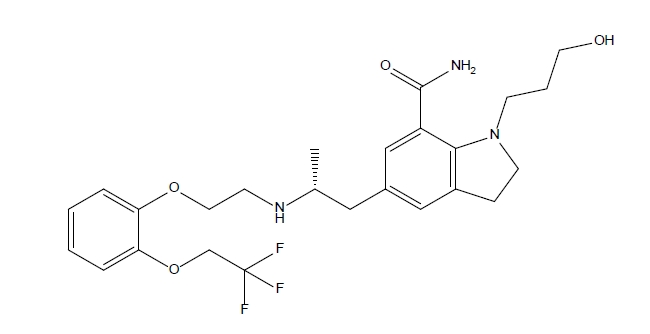
- 1,196 View
- 33 Download
-
 Abstract
Abstract
 PDF
PDF - This study focused on improving the solubility of silodosin, a drug poorly soluble in water, by utilizing solid dispersions. Three types of dispersions were examined and compared against the drug powder: surface-attached (SA), solvent-wetted (SW), and solvent-evaporated (SE). Polyvinyl alcohol (PVA) was identified as the most effective polymer in enhancing solubility. These dispersions were prepared using spray-drying techniques with silodosin and PVA as the polymer, employing solvents such as water, ethanol, and a water-acetone mix. The physicochemical properties and solubility of the dispersions were evaluated. The surface-attached dispersions featured the polymer on a crystalline drug surface, the solvent-wetted dispersions had the amorphous drug on the polymer, and the solvent-evaporated dispersions produced nearly round particles with both components amorphous. Testing revealed that the order of improved solubility was: solvent-evaporated, solvent-wetted, and surface-attached. The results demonstrated that the preparation method of the solid dispersions significantly impacted their physicochemical properties and solubility enhancement.
- [Korean]
- Preparation and Evaluation of Ketoconazole-loaded Solid-SNEDDS (Self-Nanoemulsifying Drug Delivery System) using Various Solidification Carriers
- Da Young Song, Kyeong Soo Kim
- J Powder Mater. 2023;30(6):493-501. Published online December 1, 2023
- DOI: https://doi.org/10.4150/KPMI.2023.30.6.493

- 620 View
- 9 Download
-
 Abstract
Abstract
 PDF
PDF This study aimed to develop a solid self-nanoemulsifying drug delivery system (solid-SNEDDS) to enhance the formulation of ketoconazole (KTZ), a BCS Class II drug with poor solubility. Ketoconazole, which is insoluble above pH 3, requires solubilization for effective delivery. This SNEDDS comprises oil, surfactant, and co-surfactant, which spontaneously emulsify in the gastrointestinal tract environment to form nanoemulsions with droplet sizes less than 100 nm. The optimal SNE-vehicle composition of oleic acid, TPGS, and PEG 400 at a 10:80:10 weight ratio was determined based on the smallest droplet size achieved. This composition was used to prepare liquid SNEDDS containing ketoconazole. The droplet size and polydispersity index (PDI) of the resulting liquid SNEDDS were analyzed. Subsequently, solid-SNEDDS was fabricated using a spray-drying method with solidifying carriers such as silicon dioxide, crospovidone, and magnesium alumetasilicate. The physicochemical properties of the solid-SNEDDS were characterized by scanning electron microscopy and powder X-ray diffraction, and its solubility, droplet size, and PDI were evaluated. In particular, the solid-SNEDDS containing ketoconazole and crospovidone in a 2:1 weight ratio exhibited significantly enhanced solubility, highlighting its potential for improved medication adherence and dissolution rates.
- [Korean]
- Optical Properties of Spherical YAG:Ce3+ Phosphor Powders Synthesized by Atmospheric Plasma Spraying Method Appling PVA Solution Route and Domestic Aluminium Oxide Seed
- Yong-Hyeon Kim, Sang-Jin Lee
- J Powder Mater. 2023;30(5):424-430. Published online October 1, 2023
- DOI: https://doi.org/10.4150/KPMI.2023.30.5.424
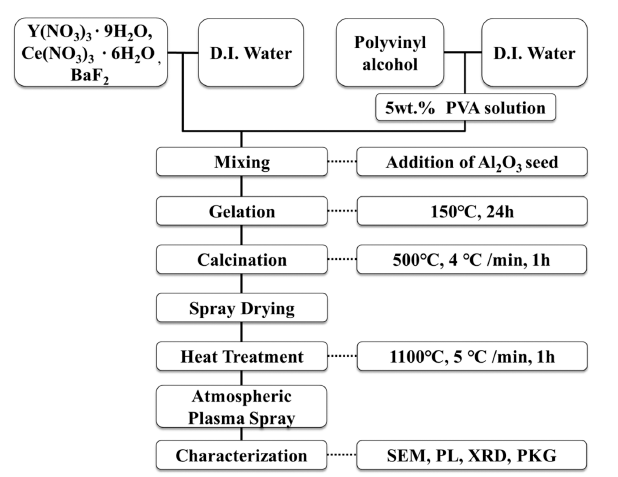
- 533 View
- 2 Download
-
 Abstract
Abstract
 PDF
PDF YAG phosphor powders were fabricated by the atmospheric plasma spraying method with the spray-dried spherical YAG precursor. The YAG precursor slurry for the spray drying process was prepared by the PVA solution chemical processing utilizing a domestic easy-sintered aluminum oxide (Al2O3) powder as a seed. The homogenous and viscous slurry resulted in dense granules, not hollow or porous particles. The synthesized phosphor powders demonstrated a stable YAG phase, and excellent fluorescence properties of approximately 115% compared with commercial YAG:Ce3+ powder. The microstructure of the phosphor powder had a perfect spherical shape and an average particle s ize of a pprox imately 30 μm. As a r esult of t he PKG t est of t he YAG p hosphor p owder, t he s ynthesized phosphor powders exhibited an outstanding luminous intensity, and a peak wavelength was observed at 531 nm.
- [Korean]
- Fabrication and Evaluation of Powders Containing Calcium Silicate for Solid Self-emulsifying System of Oil
- Sung Giu Jin
- J Powder Mater. 2022;29(6):499-504. Published online December 1, 2022
- DOI: https://doi.org/10.4150/KPMI.2022.29.6.499
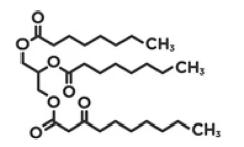
- 563 View
- 1 Download
-
 Abstract
Abstract
 PDF
PDF The objective of this study is to assess the impact of spray drying conditions on medium-chain triglyceride (MCT) loading, solubility, and release of an MCT-loaded solid self-emulsifying system in a water-insoluble oily substance. MCT-loaded solid self-emulsifying systems are prepared by spray drying with SDS and calcium silicate. The effects of inlet temperature (60, 80, or 100°C) and feed solution composition (0, 10, 50, 90, or 100% ethanol) on physicochemical properties of MCT-loaded solid self-emulsifying systems are studied. The inlet temperature significantly affects the water solubility of MCT. Moreover, the feed solution composition significantly affects water solubility, release rate, and MCT loading. The MCT-loaded solid self-emulsifying system obtained at 60°C using 90% ethanol feed solution shows the best physicochemical properties among the synthesized products and exhibits better water solubility (4.43 ± 0.44 vs. 0 μg/mL) and release (94.4 ± 1.6 vs. 32.8 ± 7.4%, 60 min) than a commercial product. Furthermore, the MCT-loaded solid self-emulsifying system shows an excellent emulsion droplet size (approximately 230 nm).
- [Korean]
- Fabrication and Characterization of
Gastrodia elata -loaded Particles for Increased Moisture Stability - Jae Hwan Jung, Sung Giu Jin
- J Korean Powder Metall Inst. 2020;27(3):241-246. Published online June 1, 2020
- DOI: https://doi.org/10.4150/KPMI.2020.27.3.241
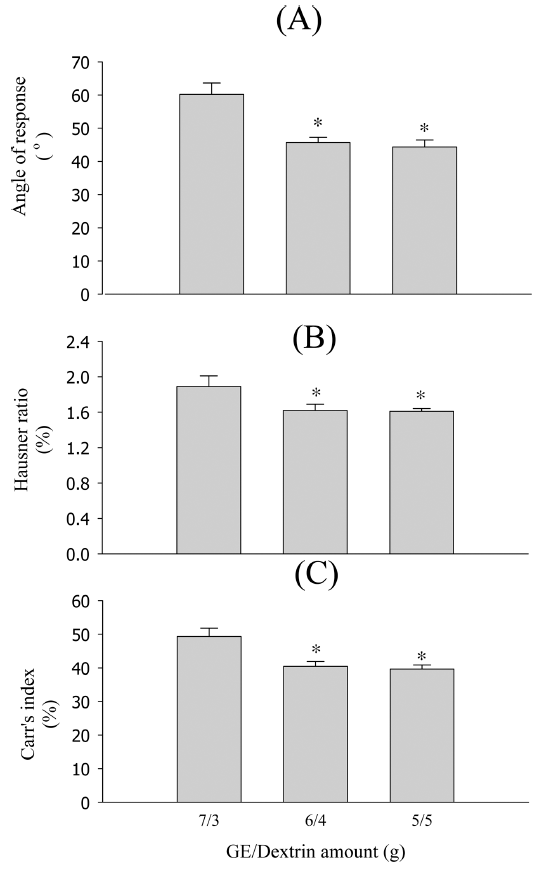
- 557 View
- 6 Download
-
 Abstract
Abstract
 PDF
PDF To develop
Gastrodia elata (GE)-loaded particles for herbal extract dosage forms, various GE-loaded particles containing dextrin, isomalt, maltodextrin, and silicon dioxide as solidifying carriers in the GE water extract are prepared using the spray drying method. Their physical properties are evaluated using the repose angle, Hausner ratio, Carr’s index, weight increase rate at 40°C/75% RH condition, and scanning electron microscopy (SEM). Particles made of dextrin improve the fluidity, compressibility, and water stability. In addition, 2% silicon dioxide increases the fluidity and moisture stability. The best flowability and compressibility of GE-loaded particles are observed with TP, dextrin, and silicon dioxide amounts in the ratio of 6/4/0.2 (34.29 ± 2.86°, 1.48 ± 0.03, and 38.29 ± 2.39%, repose angle, Hausner Ratio, and Carr’s index, respectively) and moisture stability with a 2% weight increase rate for 14 h at 40°C/75% RH condition. Therefore, our results suggest that the particles prepared by the spray drying method with dextrin and 2% silicon dioxide can be used as powerful particles to improve the flowability, compressibility, and moisture stability of GE.
- [Korean]
- Fabrication and Characterization of
Taraxacum platycarpum Extract-loaded Particles for Tablet Dosage Form - Sung Giu Jin
- J Korean Powder Metall Inst. 2019;26(3):225-230. Published online June 1, 2019
- DOI: https://doi.org/10.4150/KPMI.2019.26.3.225
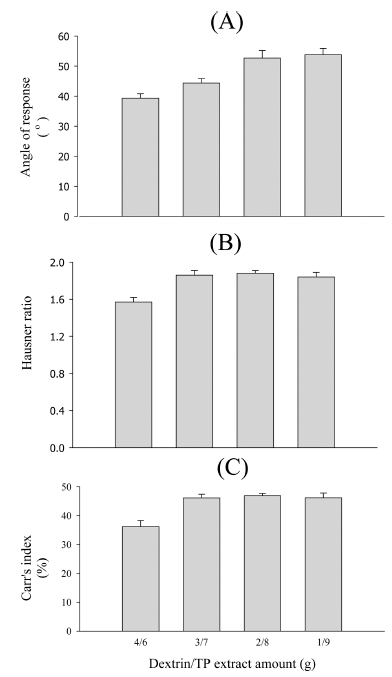
- 633 View
- 1 Download
- 1 Citations
-
 Abstract
Abstract
 PDF
PDF To develop
Taraxacum platycarpum extract (TP)-loaded particles for tablet dosage form, various TP-loaded particles composed of TP, dextrin, microcrystalline cellulose (MCC), silicon dioxide, ethanol, and water are prepared using a spray-drying method and fluid-bed-drying method. Their physical properties are evaluated using angle of repose, Hausner ratio, Carr’s index, hardness, disintegrant time, and scanning electron microscopy. Optimal TP-loaded particles improve flowability and compressibility. Furthermore, 2% silicon dioxide gives increased flowability and compressibility. The formula of TP-loaded fluid-bed-drying particles at a TP/MCC/silicon-dioxide amount of 5/5/0.2 improves the angle of repose, Hausner ratio, Carr’s index, hardness, and disintegrant time as compared with the TP-loaded spray-drying particles. The TP-loaded fluid-bed-drying particles considerably improve flowability and compressibility (35.10° vs. 40.3°, 0.97 vs. 1.17, and 18.97% vs. 28.97% for the angle of repose, Hausner ratio, and Carr’s index, respectively), hardness (11.34 vs. 4.7 KP), and disintegrant time (7.4 vs. 10.4 min) as compared with the TP-loaded spray-drying particles. Thus, the results suggest that these fluid-bed-drying particles with MCC and silicon dioxide can be used as powerful particles to improve the flowability and compressibility of the TP.-
Citations
Citations to this article as recorded by- Fabrication and Characterization of Gastrodia elata-loaded Particles for Increased Moisture Stability
Jae Hwan Jung, Sung Giu Jin
Journal of Korean Powder Metallurgy Institute.2020; 27(3): 241. CrossRef
- Fabrication and Characterization of Gastrodia elata-loaded Particles for Increased Moisture Stability
- [Korean]
- Effect of Organic Additives on Microstructure and Green Density of Zirconia Granules Using Water Solvent
- Ji-Hwan Jung, Sang-Jin Lee
- J Korean Powder Metall Inst. 2017;24(2):147-152. Published online April 1, 2017
- DOI: https://doi.org/10.4150/KPMI.2017.24.2.147
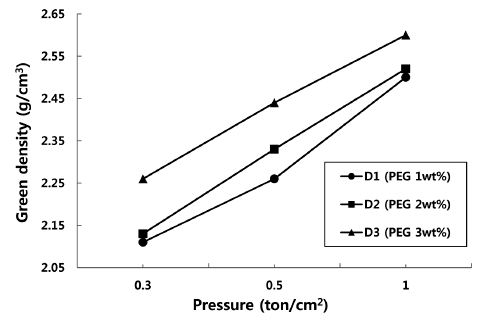
- 1,199 View
- 31 Download
- 2 Citations
-
 Abstract
Abstract
 PDF
PDF Spherical-type zirconia granules are successfully fabricated by a spray-drying process using a water solvent slurry, and the change in the green density of the granule powder compacts is examined according to the organic polymers used. Two organic binders, polyvinyl alcohol (PVA) and 2-hydroxyethyl methacrylate (HEMA), which are dissolved in a water solvent and have different degrees of polymerization, are applied to the slurry with a plasticizer (polyethylene glycol). The granules employing a binder with a higher degree of polymerization (PVA) are not broken under a uniaxial press; consequently, they exhibit a poor green density of 2.4 g/cm3. In contrast, the granule powder compacts employing a binder with a lower degree of polymerization (HEMA) show a higher density of 2.6 g/cm3 with an increase in plasticizer content. The packing behavior of the granule powders for each organic polymer system is studied by examining the microstructure of the fracture surface at different applied pressures.
-
Citations
Citations to this article as recorded by- Effects of TiO2 Addition and Processing Variables on the Properties of Black Aluminum Nitride
Min-Kwon Park, Sin-Il Go, Kwang-Hee Han, Sang-Jin Lee
Korean Journal of Materials Research.2025; 35(8): 345. CrossRef - Uniaxial compaction and sintering of ZrO2−3 mol% Y2O3 using rubber and PEG solutions as binders
M.I. Dvornik, O.O. Shichalin, E.A. Mikhailenko, A.A. Burkov, S.V. Nikolenko, N.M. Vlasova, E.V. Chernyakov, A.A. Gnidenko, P.G. Chigrin, I. Yu Buravlev, N.S. Konovalova
Materials Chemistry and Physics.2024; 328: 129981. CrossRef
- Effects of TiO2 Addition and Processing Variables on the Properties of Black Aluminum Nitride
TOP
 kpmi
kpmi


 First
First Prev
Prev


